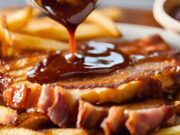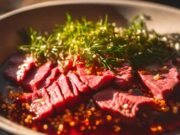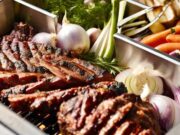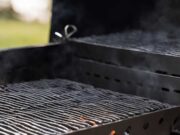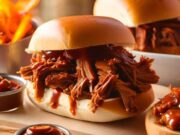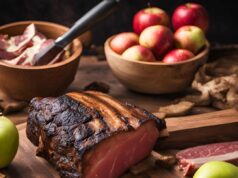When it comes to BBQ, your choice of wood can significantly enhance your grilling experience, imparting distinct flavors to your meats that elevate your culinary creations.
This article examines the critical role of wood in BBQ, covering various types—such as fruit and nut woods—and offering practical tips for sourcing your own.
You will learn how to create delicious flavor blends and maximize the impact of wood on your grill. Engage with us on this flavorful journey to discover your ideal BBQ profile.
Key Takeaways:
- Understanding the role of wood in BBQ is crucial for achieving desired flavors.
- Different types of wood, including fruit and nut woods, can add unique flavors to your BBQ.
- Experimenting with combinations of wood and aromatics can create flavorful BBQ blends to suit your taste.
Understanding the Importance of Wood in BBQ
Understanding the significance of wood in BBQ is essential for achieving the smoky flavors that enhance various grilled foods, from meats to vegetables, providing an authentic backyard cooking experience.
Different types of wood not only deliver unique smoke flavor intensities but also influence moisture content, which ultimately affects cooking time. For instance, hickory is a popular choice due to its strong, hearty flavor, making it ideal for richer cuts of meat such as pork ribs or brisket. In contrast, fruitwoods like apple and cherry offer milder, sweeter profiles that complement poultry and fish exceptionally well.
The choice of wood can also affect the overall cooking duration; hardwoods generally burn longer than softer varieties, allowing for a slow and steady smoke, while lighter woods can quickly impart their flavor, making them suitable for shorter cooking sessions. This knowledge enables grill enthusiasts to tailor their wood selection based on the dish they are preparing, ensuring that each bite is infused with the perfect smoky essence.
Types of Wood for BBQ: A Comprehensive Guide
A comprehensive guide to the types of wood for BBQ outlines the diverse options available to grilling enthusiasts, each offering distinct flavors and characteristics that enhance the smoking process. Options such as hickory, mesquite, oak, maple, and cherry wood play a significant role in not only influencing the taste of smoked meats but also impacting the cooking techniques used.
This ensures that every BBQ session becomes a flavorful adventure.
Fruit Woods and Nut Woods
Fruit woods and nut woods each offer distinct flavor profiles to BBQ. Cherry wood provides a sweet, mild flavor that pairs beautifully with smoked meats, while nut woods like hickory deliver a stronger, more robust smoke flavor.
The choice of wood significantly influences the overall taste and aroma of barbecued dishes, enhancing your culinary experience. For example, applewood, with its light fruity smoke, is excellent for poultry and pork, imparting a subtle sweetness that complements the natural flavors of these meats. Conversely, mesquite wood offers an intense, earthy smoke that works exceptionally well with beef, particularly brisket, and is often favored by those seeking a bold flavor.
Combining different woods can also create unique profiles. For instance, mixing cherry and hickory can yield a deliciously balanced result. Exploring these combinations allows you to customize your BBQ offerings, turning each meal into a delightful adventure.
Hardwoods and Softwoods
Understanding the difference between hardwoods and softwoods is essential for effective smoking techniques. Hardwoods, such as oak and hickory, are preferred due to their dense structure and ability to produce clean smoke, which is crucial for BBQ cooking.
When considering flavors, hardwoods impart a richer and more complex profile to meats, enhancing the overall BBQ experience. For example, mesquite provides a strong, earthy flavor that pairs exceptionally well with beef, while cherry wood adds a subtle sweetness, making it a popular choice for poultry.
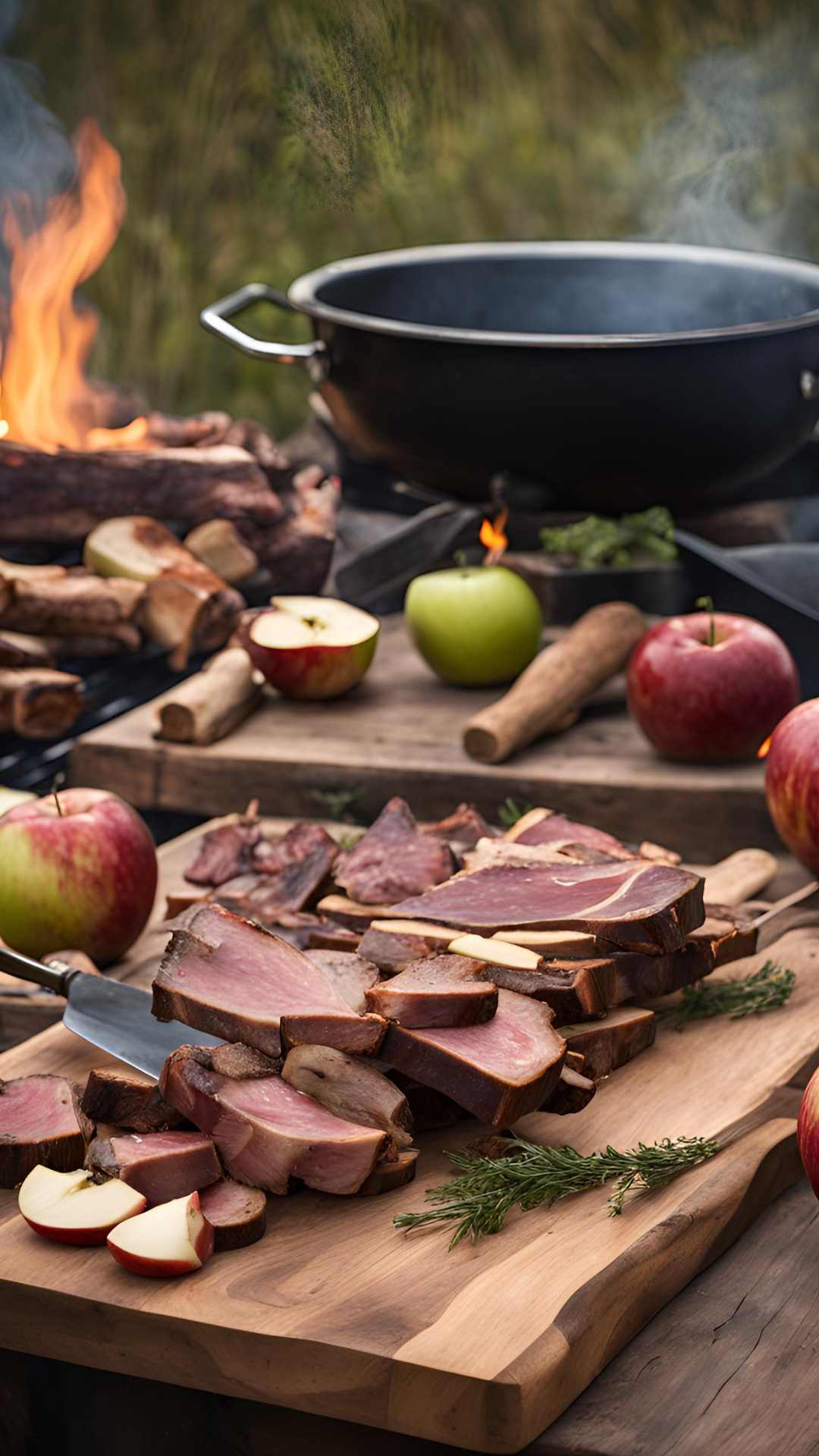
In contrast, softwoods like pine and cedar contain higher levels of sap and resin, which can result in a bitter taste; therefore, they are generally not recommended for smoking food. By selecting the appropriate type of wood, you can elevate your grilling game, ensuring that each bite delivers a delightful smoky flavor that complements the dish perfectly.
Foraging for Wood and Aromatics
Foraging for wood and aromatics can significantly enhance your BBQ experience. This practice allows you to source local, wildcrafted ingredients such as California juniper, sage, fennel seeds, and bay leaves, which can elevate the flavor of smoked meats.
Incorporating these unique elements will not only enrich the taste but also provide a deeper connection to the ingredients you use.
Safe Foraging Practices and Identifying Edible Woods
Safe foraging practices are essential for anyone looking to identify edible woods and aromatic plants. This ensures that the foraging process enhances BBQ flavors while also maintaining safety and sustainability.
It is crucial to understand how to distinguish between safe and toxic species, as well as to recognize the unique properties that different woods can impart to food. When foraging, you should familiarize yourself with local flora and fauna and remain mindful of the environment to prevent overharvesting. Respecting local regulations is key, as certain areas may have restrictions on foraging to preserve ecosystems.
For those interested in expanding their foraging knowledge, numerous online resources, workshops, and foraging guides are available, providing valuable tips and detailed identification techniques.
Creating Unique Flavor Blends
Creating unique flavor blends in BBQ involves combining various woods and aromatic ingredients to develop distinctive profiles that enhance the taste of smoked meats, fish, and vegetables. This process allows you to elevate the overall flavor experience, ensuring each dish stands out with its own signature taste.
Combining Different Woods and Using Aromatics
Combining different types of wood and using aromatics can create complex flavor profiles in BBQ, offering you endless opportunities to experiment with smoked meats, vegetables, and fish to achieve the perfect taste.
For example, pairing applewood with a hint of rosemary can beautifully complement pork, imparting a subtle sweetness that enhances its natural juices. Similarly, hickory can introduce rich, bold flavors to beef brisket, especially when combined with garlic and onion, resulting in a savory experience that tantalizes the taste buds.
If you enjoy seafood, you may find that cherry wood adds a delicate sweetness to grilled salmon, making it a standout dish at any gathering. By exploring various combinations, you can discover unique flavor profiles that elevate your BBQ skills and impress your guests.
Practical Tips for Using Wood on the Grill
Utilizing practical tips for using wood on the grill can significantly enhance your grilling experience. These guidelines will lead you through the essential aspects of preparing the wood, managing cooking times, and employing effective smoking techniques to achieve premium results.
Preparing Wood and Timing for Optimal Flavor
Preparing wood correctly and timing its introduction during the smoking process are essential for achieving optimal flavor and creating a desirable smoke ring in your BBQ dishes.
To start, you should select the right type of wood, as different varieties impart unique flavors to the meat. Cutting the wood into uniform chunks or chips will help ensure consistent burning. Next, drying the wood is crucial; ideally, it should be seasoned for at least six months to allow moisture to evaporate, as excess moisture can lead to overly smoky, acrid flavors.
Timing is also important; introducing the wood too early can overpower the meat’s natural taste, while adding it later may not provide sufficient depth. Understanding the science behind the smoke ring—a pink layer formed beneath the bark due to a reaction between smoke and heat—can enhance both the appearance and flavor of your BBQ, making it a standout feature for enthusiasts.
Frequently Asked Questions
What is the best type of wood to use for BBQ flavors?
The best type of wood to use for BBQ flavors depends on personal preference, but some popular options include hickory, mesquite, and applewood.
What types of meat pair well with different types of wood?
Hickory is great for beef and pork, mesquite is perfect for chicken and fish, and applewood is a tasty choice for pork and poultry.
How does the type of wood affect the flavor of BBQ meat?
The type of wood used can greatly impact the flavor of BBQ meat. For example, hickory produces a smoky, bacon-like flavor, while mesquite has a strong, earthy taste.
Can I mix different types of wood for a unique flavor?
Absolutely! Experimenting with different wood combinations can lead to delicious and unique BBQ flavors. Just be sure to not use too much of stronger woods like mesquite to avoid overpowering the flavor.
What is the best way to incorporate wood flavors into my BBQ cooking?
The best way to incorporate wood flavors is to use wood chips or chunks in a smoker or grill. You can also soak the wood in water or other liquids for added flavor.
Are there any health concerns with using wood for BBQ flavors?
When using wood for BBQ flavors, it’s important to use wood that is untreated and free of chemicals. It’s also recommended to use a designated BBQ wood for cooking to ensure food safety.








